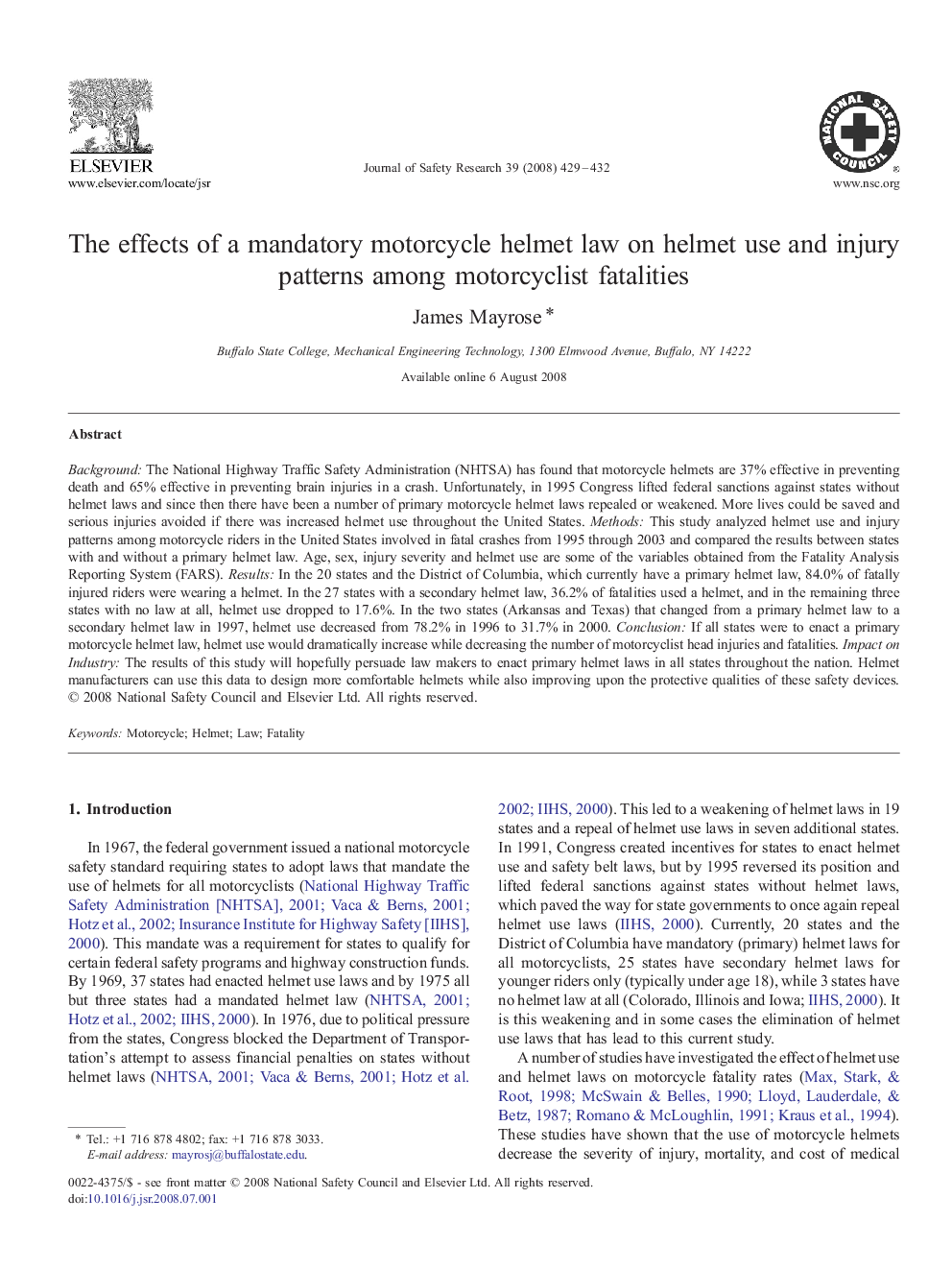| Article ID | Journal | Published Year | Pages | File Type |
|---|---|---|---|---|
| 587798 | Journal of Safety Research | 2008 | 4 Pages |
BackgroundThe National Highway Traffic Safety Administration (NHTSA) has found that motorcycle helmets are 37% effective in preventing death and 65% effective in preventing brain injuries in a crash. Unfortunately, in 1995 Congress lifted federal sanctions against states without helmet laws and since then there have been a number of primary motorcycle helmet laws repealed or weakened. More lives could be saved and serious injuries avoided if there was increased helmet use throughout the United States.MethodsThis study analyzed helmet use and injury patterns among motorcycle riders in the United States involved in fatal crashes from 1995 through 2003 and compared the results between states with and without a primary helmet law. Age, sex, injury severity and helmet use are some of the variables obtained from the Fatality Analysis Reporting System (FARS).ResultsIn the 20 states and the District of Columbia, which currently have a primary helmet law, 84.0% of fatally injured riders were wearing a helmet. In the 27 states with a secondary helmet law, 36.2% of fatalities used a helmet, and in the remaining three states with no law at all, helmet use dropped to 17.6%. In the two states (Arkansas and Texas) that changed from a primary helmet law to a secondary helmet law in 1997, helmet use decreased from 78.2% in 1996 to 31.7% in 2000.ConclusionIf all states were to enact a primary motorcycle helmet law, helmet use would dramatically increase while decreasing the number of motorcyclist head injuries and fatalities.Impact on IndustryThe results of this study will hopefully persuade law makers to enact primary helmet laws in all states throughout the nation. Helmet manufacturers can use this data to design more comfortable helmets while also improving upon the protective qualities of these safety devices.
